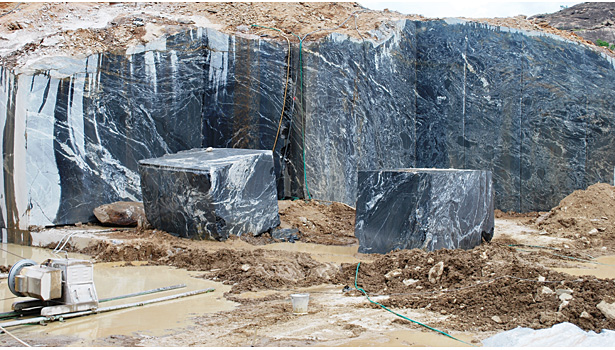Exploring Granite Quarries in South Africa Sector: From Quarry to Masterpiece
Exploring Granite Quarries in South Africa Sector: From Quarry to Masterpiece
Blog Article
Unearthing the Rich History and Lasting Practices of Granite Quarrying
As we base on the precipice of revealing the elaborate tapestry of granite quarrying, a trip through time exposes not just the physical act of drawing out rock but likewise the social and historical relevance woven into the very material of this practice. From the ancient origins that laid the structure for modern quarrying strategies to the lasting techniques that are forming the future of this industry, each chisel mark on granite surfaces informs a tale waiting to be unearthed (granite quarries in south africa). The legacy of granite quarrying extends far beyond simple removal; it is a testimony to human resourcefulness, durability, and the long-lasting attraction of this stunning rock
Old Beginnings of Granite Quarrying
Going back to ancient people, the technique of quarrying granite has actually been an essential part of human history and architectural improvement. The earliest proof of granite quarrying days back to old Egypt, where huge pyramids and elaborate sculptures were crafted from this long lasting rock. The Egyptians made use of primitive devices to remove granite blocks from quarries, showcasing the importance of this material in their monumental constructions.
Moving forward in history, the Greeks also made significant contributions to the quarrying of granite. The Greeks used granite in various architectural marvels, such as holy places and statuaries, showing their ability in shaping and sculpting this sturdy stone. The Romans additionally fine-tuned the methods of quarrying granite, utilizing advanced tools like chisels and hammers to remove and form granite for their famous frameworks.
With the centuries, the practice of quarrying granite has evolved, with modern-day innovations improving effectiveness while maintaining the classic allure of this all-natural stone - granite quarries in south africa. From ancient human beings to modern home builders, the tradition of granite quarrying continues to shape our world
Development of Quarrying Methods
The advancement of quarrying strategies has actually been marked by a continual progression in the direction of better performance and accuracy in extracting granite. From the simple approaches employed by our ancestors to the innovative technologies used in modern quarrying procedures, the sector has undertaken substantial innovations. Early quarrying methods entailed manual work with basic devices such as chisels, hammers, and wedges to remove granite blocks from the earth. As civilizations advanced, techniques like fire-setting and primitive nitroglycerins were introduced to promote the extraction procedure.
In more current times, the advent of equipment revolutionized the quarrying market, making it possible for faster extraction prices and increased efficiency. Technologies such as ruby cord saws, high-pressure water jets, and pneumatic drills have come to be basic in contemporary quarries, permitting precise cutting click to read more and minimized waste. In addition, developments in computer-controlled devices and 3D modeling have actually maximized quarrying operations, resulting in very little ecological influence and improved sustainability practices. As the demand for granite remains to increase, the advancement of quarrying techniques remains indispensable to conference market needs effectively and sustainably.
Cultural Significance of Granite
Granite holds an extensive cultural significance throughout various human beings due to its long-lasting presence in building work of arts and respected monuments. The social importance of granite expands beyond its physical features; it symbolizes durability, security, and eternity, making it a symbol of withstanding legacies and practices.

Sustainable Practices in Quarrying
Among the rich history of granite quarrying and its social relevance lies an expanding emphasis on sustainable techniques within the market. As ecological understanding and problems regarding source deficiency have actually enhanced globally, the quarrying market has increasingly welcomed lasting approaches to lessen its effect on the setting and surrounding communities.

In addition, recovery and recovery of quarry websites post-extraction are indispensable to lasting methods. By bring back quarried areas to a natural or useful state, such as producing wildlife habitats or entertainment rooms, quarriers can counter the ecological footprint of their operations and add favorably to the regional environment.
Tradition of Granite Quarrying
With a historical background soaked in craftsmanship and industrial progress, what sustaining effect has granite quarrying left on the landscape of contemporary society? The heritage of granite quarrying goes beyond mere extraction techniques; it has actually shaped architectural wonders, metropolitan landscapes, and cultural heritage worldwide. The sturdy nature of granite has actually made it a preferred selection for monoliths, buildings, and infrastructure, standing as a testimony to the skill resource and virtuosity of quarry employees throughout generations.
Moreover, the financial footprint of granite quarrying can not be overlooked. The sector continues to provide employment possibility and drive local economic situations in regions where granite removal is common. It has additionally spurred technical developments in quarrying strategies and devices, leading to a lot more efficient and lasting practices.
In terms of sustainability, the tradition of granite quarrying consists of initiatives to reduce ecological influences through reclamation projects and accountable source management. By balancing economic rate of interests with ecological stewardship, the industry strives to make sure that future generations can proceed to benefit from this enduring natural resource.
Final Thought

Report this page